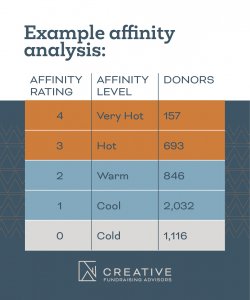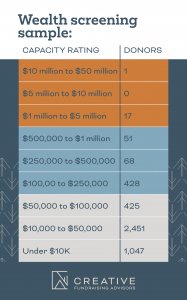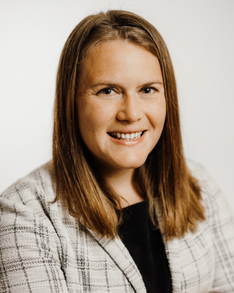Fundraising Opportunities: Using Donor Data Strategies to Acquire and Retain Benefactors

By Stephanie Willis, Senior Manager, Prospect Development
Have you burned out your top donors? Are you unsure which of the people in your fundraising database—people you know personally and others who are simply names on a page—you should cultivate next? Do you feel like other worthy organizations in your community are a step ahead of yours? Does data science overwhelm you?
You are not alone. In the competitive fundraising climate of today, nonprofits are struggling with how to connect new people to their cause and how to compel their tried-and-true donors to increase gift frequency and size. What the savviest organizations have realized is that data-driven strategies can provide the insights needed to elevate fundraising.
Whether you’re trying to grow your annual fund, launch a new program, or build a new building, bridging your relationship skills, experience, and intuition – the art – with the factual donor data – the science – will generate the best fundraising results. Why? Because the proper use of data-driven strategies (the art and science combo) leads to new donor acquisition and existing donor retention.
Where Do I Start with Donor Data Services?
If the idea of a database clean-up makes you want to run and hide, you’re not alone. More than 85 percent of nonprofits identified their development staff as not being “completely knowledgeable” in data-driven decision-making in a 2022 report on philanthropy and fundraising practices. I urge you to stick around, however, because the quality of your data and how you use it directly correlates to your organization’s fundraising potential.
The first step is determining what makes the most sense for your organization by talking to a data expert. Before you do, ask your development team two questions: “What is the problem we are trying to solve?” and “What are we hoping data will help us identify?” For example, if your team is challenged by soliciting the same prospects, then you may be looking to leverage data to unlock a fuller picture of your donor base and giving potential. One of Creative Fundraising Advisors’ data services, our yield analysis report, is designed to give you a comprehensive donor inclination analysis and the number of “cold,” “warm,” and “hot” prospects as well as a list of the top potential campaign prospects for you to prioritize.


What is Data Hygiene?
Data—the information you already have and new information you can capture—is an effective tool to develop internal systems and strategies that will help prioritize your time, inform your development operation, and yield better results. Donor data can help make you and your organization’s fundraising machine
more effective: finding new donors, uncovering new intelligence about people you already know, ensuring you have the right staff to raise the most money, and informing when to take the next step with a prospect.
However, the saying, “garbage in, garbage out” is true: if your database is unorganized or out of date, you’ll need to clean it up or risk alienating your donor community. Think about how you would feel if mail arrived at your home addressed to a deceased relative, or if you were a top prospect who received three of the same mailers with three variations of your name.
Data cleanup can be cumbersome, so we recommend checking the accuracy of your top donors first. Next, pull a mailing list and scan the sheet for errors and then correct them in the database using a protocol for inputs. Start by identifying the fields in your database requiring 100% accuracy such as the name, address, phone number, and email fields. Consider using an address finder solution that can automatically check for address updates; most databases offer address verification as a low-cost add-on service.
Who Handles the Database?
Every nonprofit should have a person responsible for donor database management: a data “champion” who is familiar with the organization’s donor database and tracking inputs, updates, and corrections. And we strongly believe in cross-training so that everyone on the team is comfortable and familiar with the database and can learn data input protocols.
If your data champion is not proficient at database training, and especially if your team will be using the database for different reasons, consider having an outside expert conduct a data workshop with everyone who will share the database.

How Can I Use Donor Data Strategies to Identify and Prioritize Donors?
It is imperative that every organization be aware of its top prospects, whether it’s 25, 50, or 100 people, and leverage donor data and relationship insights to prioritize them. While it may not be feasible to have every person or family assigned to a member of your team, development officers typically manage 50-200 prospects each.
The primary purpose of assigning prospects to development officers is to ensure donors are properly engaged in a moves management lifecycle. “Moves management” is an organizational approach for tracking and engaging donors as they interact with your organization, where “moves” refer to the actions your organization takes to establish these relationships and “move” prospective donors closer to your cause and mission. Research suggests it takes between seven and 12 moves for a donor to decide whether to support a nonprofit or not.
Data is paramount to how you segment people into priority groups within the moves management lifecycle. The more donor data you have, the more you know about your donors—interests, real estate holdings, political affiliations, board relationships, philanthropy, etc.—the more effectively you are able to prioritize them. The goal is to hit the sweet spot where higher wealth capacity meets higher inclination. If you find someone who has a low affinity to be charitable to your cause but high capacity, you will have to invest more time to cultivate that person before you ask or ask for more.

Involve the development staff and volunteer committee to collect knowledge and enter it into your database regularly. Track actions, take notes, utilize the same input protocols, and update your database as you go.
Take One Step at a Time
Clients express to me that they feel overwhelmed by donor data. They need a partner to help with data cleanup, research, translation, and strategy who can highlight the next steps to take and how to best use the information for improved fundraising results. Keep it simple and take one step at a time. Remember, donor data analysis and donor prioritization are not entirely science. There’s an art, too. Fundraising is about relationships and your primary job is to help connect people to a cause they care about: hopefully yours. If you can avoid the overwhelm and stay enthusiastic about using data for fundraising, you will see results.
Reach out today to learn how Creative Fundraising Advisors can assist with your fundraising data strategy.

Stephanie Willis, Senior Manager, Prospect Development
Stephanie has over 10 years of experience in prospect research, prospect management, and data analytics at both higher education and nonprofit organizations. At CFA, Stephanie’s responsibilities include establishing strategy, procedures, and processes for prospect research, prospect management, and data analytics. Stephanie is Blackbaud-certified in Raiser’s Edge NXT and Raiser’s Edge, and has a master’s degree in library science. Additionally, Stephanie is a Gallup-certified Strengths coach and helps others understand, apply and integrate CliftonStrengths results into their lives and work.
